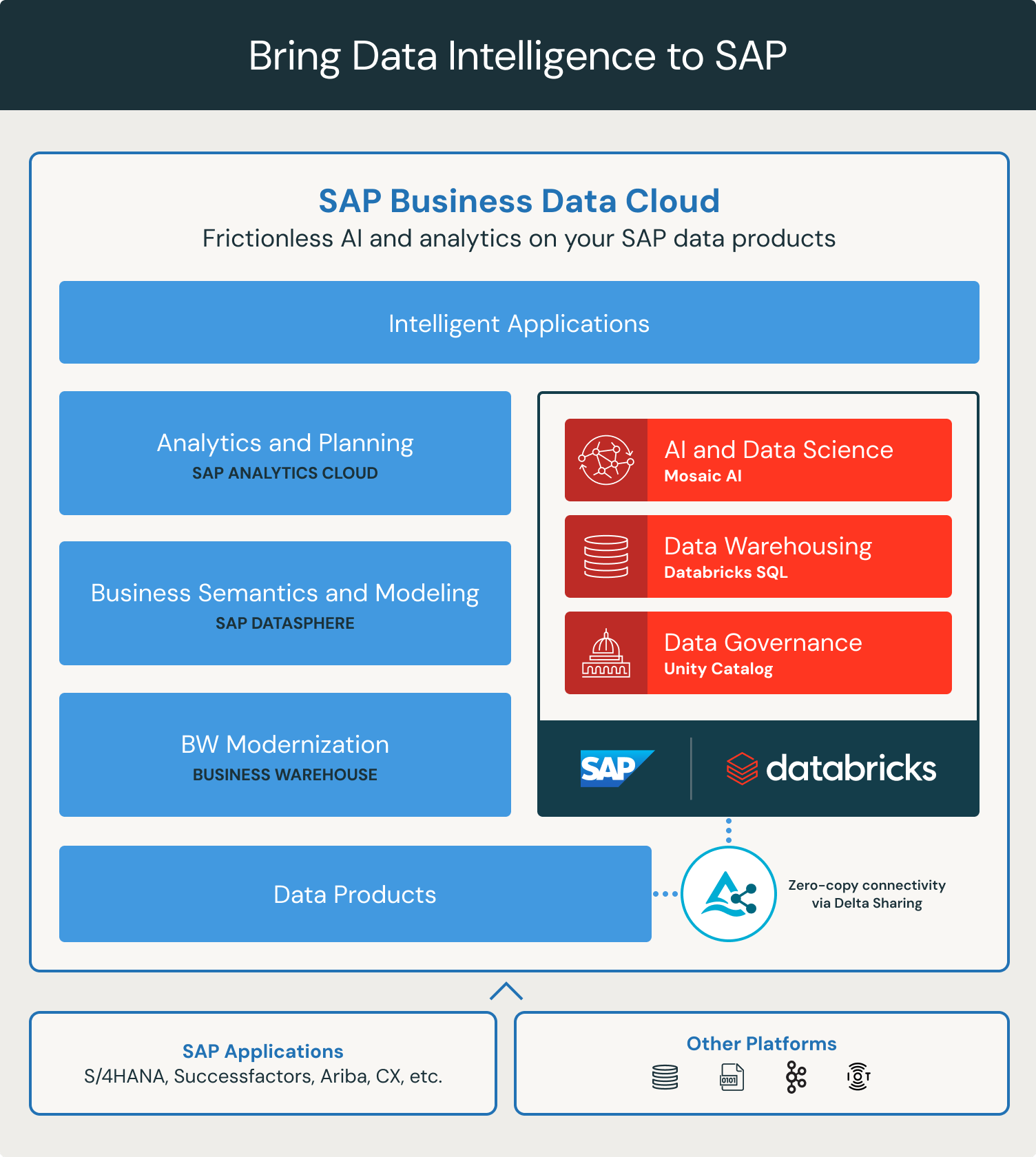Announcing the General Availability of SAP Databricks on SAP Business Data Cloud
Data intelligence for your SAP data, all within SAP Business Data Cloud

Summary
- SAP Databricks allows customers to integrate SAP data with the rest of the enterprise data for advanced analytics and AI use cases, including agent systems
- SAP Databricks and SAP Business Data Cloud share data bi-directionally, allowing customers to access live data and improve governance within their SAP estate
- SAP customers should contact their SAP account teams to get started with SAP Databricks
SAP Databricks in SAP Business Data Cloud is now generally available. SAP Databricks is a fully managed version of Databricks included natively as a service in SAP Business Data Cloud. SAP and Databricks’ partnership allows customers to unlock data intelligence on your most important business data from SAP and combine it with external sources.

Why AI and Analytics on SAP Data is complex and how to simplify it
Enterprises depend on SAP for critical data across supply chain, inventory, finance, HR, and more—90% of Fortune 500 companies rely on it every day. But when it comes to building AI and analytics systems, traditional approaches create challenges.
Today, customers often replicate SAP data into external platforms to clean, train models, deploy them, run inference, and push results back—introducing complexity, higher costs, and governance gaps.
SAP Databricks offers a better path. Customers can now run end-to-end AI, ML, and analytics directly within SAP Business Data Cloud—without needing separate platforms or physical data replication..
Seamless data sharing between SAP BDC and SAP Databricks, powered by Delta Sharing
SAP Databricks integrates natively with SAP Business Data Cloud through Delta Sharing, enabling secure, bidirectional data access without physically copying data between systems. This shared foundation allows data teams to:
Blend SAP data with external data: Data teams can blend their SAP data with data from other applications, databases, and object storage systems. Data scientists and analysts can explore this blended data using Databricks Notebooks or the Databricks SQL Editor. Likewise, data teams can clean and transform this blended data to prepare it for domain-specific AI/ML use cases. The Assistant, Databricks’ context-aware AI assistant for code authoring, helps accelerate time-to-insight.
Build domain-specific AI/ML: SAP Databricks supports a wide range of use cases on blended datasets, including low-code forecasting for planning, RAG-based chatbots on internal documents, iteration on custom models, and the development of agentic systems with Mosaic AI.
Pick the best SAP application for downstream use cases: Because all applications within SAP Business Data Cloud can access the same data, teams can perform AI and analytics in SAP Databricks and seamlessly use downstream SAP applications, like planning tools, without redundant data pipelines or moving data.
SAP Databricks brings data intelligence natively to SAP Business Data Cloud
SAP Databricks uses both generative and traditional AI to understand your organization’s data, business terms, and key metrics, so teams can work with data using natural language. It makes it easier to find, organize, manage, and govern data through Unity Catalog, and automatically improves how data is stored behind the scenes to make things faster based on how it’s being used. AI applications can tap into this built-in intelligence, so you spend less time on prompt engineering and more time building useful solutions.
Rapidly onboard SAP data products and perform AI
Data products in SAP Business Data Cloud are automatically available in SAP Databricks through Delta Sharing. This makes it easy for teams to access SAP data, combine it with external sources, and build predictive models, like forecasting future cash flows.
The predictions can then be sent back into SAP Business Data Cloud for planning, reporting, or visualization.
Meet us at SAP Sapphire!
The Databricks team will be at SAP Sapphire in Orlando and Madrid. We’d love to understand the challenges you face running AI and analytics on your SAP data, as well as share how SAP Databricks can help you accomplish your data goals.
Register for Databricks sessions at SAP Sapphire in-person or virtually.
Never miss a Databricks post
What's next?

Product
November 21, 2024/3 min read
